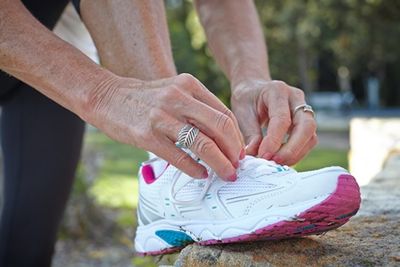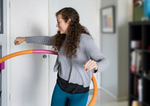Want to improve your fitness? Just put one foot in front of the other!
by Guest Author,
- November 17, 2017
- Leave a comment

Brooke Penny, student dietitian Curtin University
The Australian Physical Activity and Sedentary Behaviour Guidelines recommend we aim for 150-300 minutes per week of moderate intensity exercise, this is around 30 minutes a day of brisk walking. An easy way to know if you are exercising at moderate intensity is that you can comfortably talk as you walk, but not sing!
Walking can help keep us physically active which is great for our health. It can help us to manage or reduce the risk of type 2 diabetes and heart disease and prevent unwanted weight gain. Walking can also provide us with opportunities to socialise and meet new people.
Finding time to walk during day can also reduce the time we spend sitting. Being sedentary has its own set of health risks so making walking part of our daily routine can help break up the long periods we spend sitting behind our desk, on the couch or on our daily commute.
Getting started
- If you are just starting out with walking for exercise, take it slow and check with your doctor first if you have any concerns. Any exercise is better than no exercise, so don’t feel discouraged if you don’t meet your goals right away.
- Start small. If you can’t walk for a full 30 minutes try walking in 10 minute intervals to start with, then work your way up.
- Have a destination in mind. If you are new to walking start with an easy destination, walking a few streets from your home or around your local park.
- Don’t have time? We are all busy so finding time to exercise can sometimes be hard. If you only have time for a short walk, try an increase the pace to challenge yourself.
- Walk to work. Park further from work or get off at an earlier bus stop to increase your walking distance. Using the stairs instead of the elevator and choosing a lunch destination you can walk to are also easy ways to incorporate walking into your work day.
Staying motivated
Like any other exercise regime, we sometimes get bored, run out of energy or lose motivation. Use these tips to help you stay on track and make walking for exercise a lifelong habit.
- Walking with friends or family can help keep you motivated. Try and find a walking buddy who you take regular walks with. Suggest walking with friends to socialise instead of catching up over drinks or a meal.
- Keep a pedometer. Count the number of steps you take each day, this can help you to create goals and encourage you to keep improving.
- Have a destination. When we start losing motivation, walking for a purpose other than fitness can sometimes be helpful. Walking to the shops to get a few groceries, walking the kids to school or walking to a friend’s house can give us the extra encouragement we need.
Anyone can give walking a go, so try it today! Start off with a small goal and see where it takes you.
Editor's Note: The Australian Institute of Health and Welfare (AIHW) has released a report on the impact of physical inactivity on disease burden in the Australian population. Results suggest prevention and intervention efforts may best be focused on sustained population-level increases in physical activity, by as little as 15 minutes each day, to avoid associated disease burden. The report can be accessed via the AIHW website.
LiveLighter supports future health professionals through engagement with Australian Universities. This student blog was created for LiveLighter as part of Advanced Public Health Nutrition Practice coursework (Master of Dietetics at Curtin University, Western Australia).







